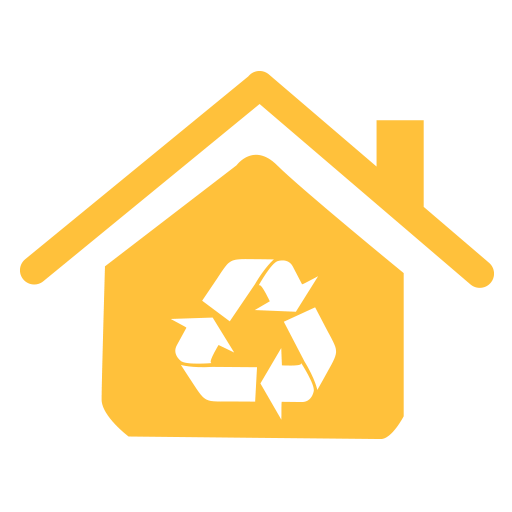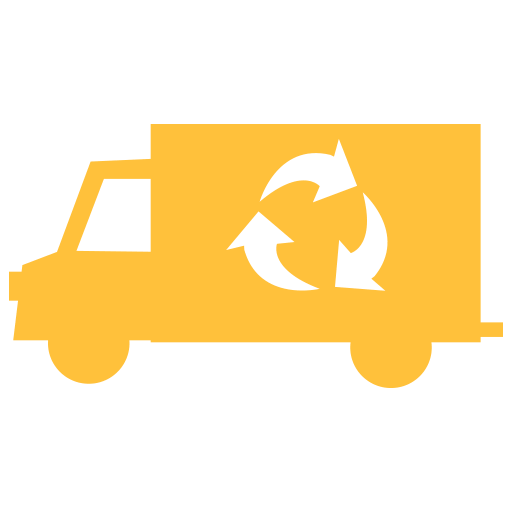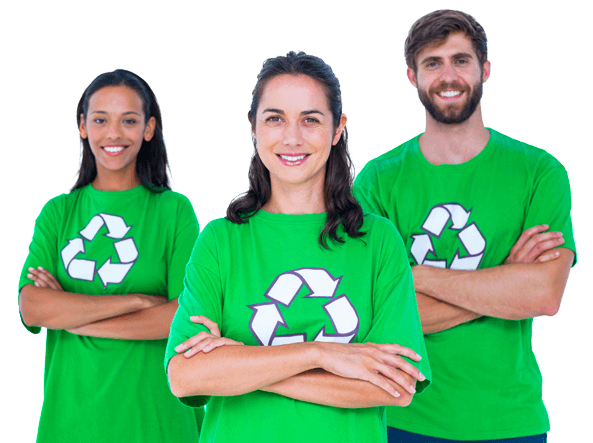Avoid These Plastics for a Safer, Healthier Lifestyle
Posted on 02/10/2025
Avoid These Plastics for a Safer, Healthier Lifestyle
Living a healthier and safer lifestyle isn't just about diet and exercise--it's also about paying close attention to the materials you use every day. Plastics are everywhere, from the bottles you drink from to the packaging your food comes in. However, not all plastics are created equal. Some plastics can pose significant risks to your health and the environment. In this comprehensive article, we'll explore which plastics to avoid for improved wellbeing, how to identify them, their dangers, and safer alternatives you can use for a truly health-conscious lifestyle.
Why Should We Be Concerned About Harmful Plastics?
Plastics revolutionized our world due to convenience and versatility. Nevertheless, decades of research have revealed alarming health hazards associated with certain types of plastic. Not all plastics are bad, but several common varieties release toxic chemicals into food and beverages, potentially interfering with hormone function, increasing the risk of chronic diseases, and harming the environment.
- Leaching: Harmful plastics can leach chemicals like BPA, phthalates, and other toxins--especially when heated or damaged.
- Bioaccumulation: Persistent substances can accumulate in your body over time, compounding potential health risks.
- Endocrine Disruption: Certain plastics mimic hormones and disrupt the endocrine system, possibly contributing to obesity, reproductive issues, neurological problems, and cancer.
- Environmental Impact: Improperly disposed plastics pollute water, soil, and wildlife, making their avoidance a key eco-friendly habit for every household.

Understanding Plastic Codes: Know What You're Using
To make safer choices with plastics, it helps to recognize the resin identification code--a number usually found on the bottom of containers, surrounded by the recycling symbol. Each code corresponds to a different type of plastic, with distinct safety considerations:
| Code | Name | Common Uses |
|---|---|---|
| 1 (PET or PETE) | Polyethylene Terephthalate | Bottled water, soda bottles, food packaging |
| 2 (HDPE) | High-Density Polyethylene | Milk jugs, shampoo bottles, some plastic bags |
| 3 (PVC) | Polyvinyl Chloride | Cling wrap, piping, some toys |
| 4 (LDPE) | Low-Density Polyethylene | Squeeze bottles, plastic bags, some wraps |
| 5 (PP) | Polypropylene | Yogurt cups, straws, medicine bottles |
| 6 (PS) | Polystyrene | Disposable cutlery, foam cups, takeaway boxes |
| 7 (Other) | Miscellaneous (often polycarbonate and BPA-containing) | Sippy cups, water bottles, food containers |
Top Plastics to Avoid for a Healthier Life
Below, we'll outline the most hazardous types of plastic to avoid, along with the science behind why they are potentially harmful. By avoiding these plastics, you dramatically reduce your exposure to dangerous chemicals and improve both your health and the environment.
1. Polyvinyl Chloride (PVC) - Plastic #3
- Common Uses: Pipes, vinyl flooring, cling wrap, shower curtains, children's toys
- Health Risks: PVC is often referred to as "the poison plastic" because it contains and can release toxic chemicals such as lead, phthalates, dioxins, and vinyl chloride. Many of these compounds are carcinogenic, disrupt hormones, and can interfere with development and fertility.
- Environmental Harm: PVC manufacturing and disposal produce hazardous byproducts that persist in the environment and bioaccumulate in the food chain.
- Avoidance Tip: Never microwave food in cling wrap or containers with a #3 code. Choose toys labeled BPA-free and phthalate-free for children.
2. Polystyrene (PS) - Plastic #6
- Common Uses: Foam cups (Styrofoam), food containers, disposable plates, cutlery, packing peanuts
- Health Risks: Polystyrene can leach styrene--a probable human carcinogen, especially when heated or in contact with fatty, acidic, or hot foods. Exposure can cause dizziness, headache, and affect the central nervous system.
- Environmental Harm: PS breaks down slowly, polluting oceans and harming marine animals who ingest it. It is rarely recycled and contributes heavily to landfill waste.
- Avoidance Tip: Swap all foam food packaging and cups for glass, stainless steel, or certified compostable alternatives.
3. Polycarbonate & Other Plastics - Plastic #7
- Common Uses: Sports bottles, baby bottles, water dispenser jugs, food containers, automotive parts
- Health Risks: #7 plastics often contain Bisphenol-A (BPA), a well-known endocrine disruptor. BPA exposure has been linked to developmental problems in children, reproductive issues, obesity, diabetes, heart disease, and certain cancers.
- Environmental Harm: Widespread use of #7 plastics adds to plastic pollution, with many products ending up in landfills or oceans.
- Avoidance Tip: Look for BPA-free labeling, but be aware that some "BPA-free" products use similar chemicals like BPS, which may also be hazardous.
4. Other Plastics to Watch: Low-Quality "Unknown Origin" Plastics
- If a plastic item does not have a resin identification code or origin label, it's safest to avoid using it, especially for food or drink storage. Unlabeled plastics may contain mixtures of dangerous compounds or recycling contaminants.
Dangers of Everyday Exposure: How Plastics Impact Your Body
Repeated, routine exposure to harmful plastics--even at low doses--can contribute to long-term health issues, particularly for infants, young children, pregnant women, and those with chronic conditions. Some of the main health effects tied to hazardous plastics include:
- Hormonal Imbalance: Chemicals from plastics can disrupt the delicate endocrine system, resulting in symptoms like fatigue, weight gain, mood swings, and disrupted reproductive cycles.
- Reproductive Issues: Phthalates and BPA are implicated in reduced fertility, birth defects, and developmental delays in children.
- Cancer Risk: Exposure to vinyl chloride, dioxins, and styrene--released from certain plastics--is associated with a higher risk of cancers such as liver, breast, and prostate cancer.
- Immune and Neurological Problems: Chemicals like BPA and phthalates have been found to weaken immune defenses and potentially influence cognitive behavior and brain development, particularly in young children.
Given these risks, minimizing your usage of the most dangerous plastics can have profound benefits for you and your family's health.
Safer Plastics: Which Are Considered Less Harmful?
While the best plastic-free lifestyle involves using glass, stainless steel, silicone, or other inert materials, some plastics are generally recognized as safer with proper use:
- #1 PET (Polyethylene Terephthalate): Widely used for beverage bottles and food containers. Generally considered safe for single use only. Repeated use (and exposure to sunlight or heat) can increase the risk of leaching.
- #2 HDPE (High-Density Polyethylene): Used in milk jugs, cleaning product bottles, and toys. Strong and resists leaching, making it one of the safest choices.
- #4 LDPE (Low-Density Polyethylene): Used for bread bags, frozen food bags, and squeezable bottles. Rarely leaches chemicals, but not as robust as #2 HDPE.
- #5 PP (Polypropylene): Used in containers for yogurt, medicines, and hot food. Withstands heat and is unlikely to leach under typical usage conditions.
However, "safer" still doesn't mean "risk-free." Avoid exposing these plastics to high heat, harsh detergents, or microwaving, as even "safe" plastics can break down and release pollutants over time.
How to Identify and Avoid Harmful Plastics
Take these actionable steps to limit your exposure to unhealthy plastics in your day-to-day life:
- Check the Recycling Code: Every time you buy a plastic product, look for the triangle symbol with a number 1-7. Avoid codes #3, #6, and #7 when possible.
- Read Product Labels: Choose products clearly labeled as BPA-free, phthalate-free, and non-toxic.
- Avoid Microwaving Plastics: Even "microwave-safe" plastics can leach chemicals when heated. Always use glass or ceramic for hot food and liquids.
- Replace Old Food Containers: Plastics degrade over time. If you see cracks, cloudiness, or wear, it's time to replace them.
- Say No to Disposable Plastics: Avoid single-use foam cups, plastic cutlery, and takeaway containers. Bring your own reusable, non-plastic alternatives when eating out.
- Be Wary of Receipts: Many thermal paper receipts are coated with BPA or BPS. Minimize contact, wash your hands after handling, and opt for electronic receipts when possible.
Healthier Alternatives: What to Use Instead of Plastic
Switching away from harmful plastics doesn't mean sacrificing convenience. Plenty of modern, affordable, and attractive options exist for safer, healthier living:
- Glass: Inert, doesn't leach chemicals, safe for microwave use, and easy to clean. Great for storing food and beverages.
- Stainless Steel: Ideal for travel water bottles, lunchboxes, and kitchenware. Durable and resistant to harboring bacteria.
- Ceramic: Perfect for heating and storing food. Ensure glazes are labeled non-toxic and lead-free.
- Silicone: Flexible and heat-resistant, ideal for bakeware, baby products, and kitchen utensils. Select food-grade silicone to avoid unknown additives.
- Bamboo and Natural Fibers: Compostable, renewable, and safe for cutlery, plates, and even toothbrushes.

Frequently Asked Questions: Plastics & a Healthy Lifestyle
Can you reuse plastic bottles safely?
It depends on the type: PET (#1) bottles should rarely be reused, as they degrade quickly. HDPE (#2) and PP (#5) are more robust, but all plastics will eventually break down and pose risks. Always clean containers thoroughly and replace when they show signs of wear.
Is "BPA-Free" always safe?
Not necessarily. Some manufacturers substitute BPA with similar chemicals like BPS or BPF, which might not be less harmful. Look for brands transparent about their materials, or switch to true inert materials like glass or stainless steel.
Are plastic toys safe for kids?
Be vigilant: Only buy from reputable brands that certify their toys as BPA- and phthalate-free. Avoid older, hand-me-down plastics or any toys with a #3 code.
How can I minimize plastic exposure when shopping?
Bring your own reusable bags, shop at bulk food stores, avoid pre-packaged foods in plastic, and support brands that use environmentally friendly or compostable packaging.
Conclusion: Take Control for a Safer, Healthier Life
Embracing a safer, healthier lifestyle is increasingly about making thoughtful choices about the materials in your environment. By avoiding the most hazardous plastics--especially those labeled #3 (PVC), #6 (PS), and #7 (polycarbonate & others with BPA)--you protect your long-term health and contribute to a cleaner, safer planet. Substitute these with safer plastics like #2 HDPE and #5 PP when alternatives aren't available, but strive for glass, stainless steel, ceramic, or silicone wherever possible.
The change starts in your own home. Educate your family, scrutinize packaging, and spread the word. Your health is in your hands. Make every choice a step toward a safer, healthier, plastic-aware life!

 020 3875 4102
020 3875 4102 020 3875 4102
020 3875 4102




 House clearance
House clearance Rubbish collection
Rubbish collection





